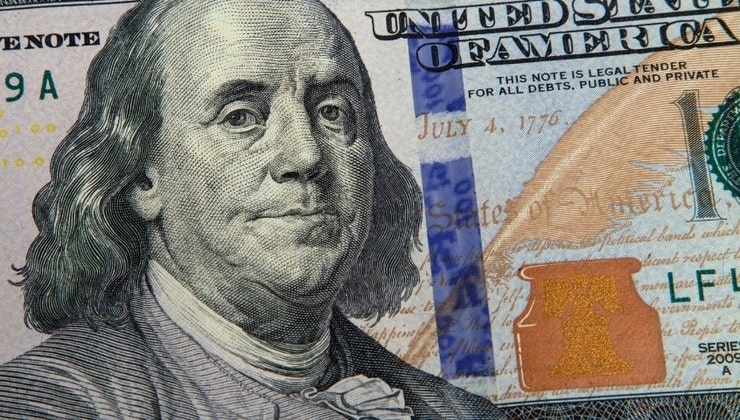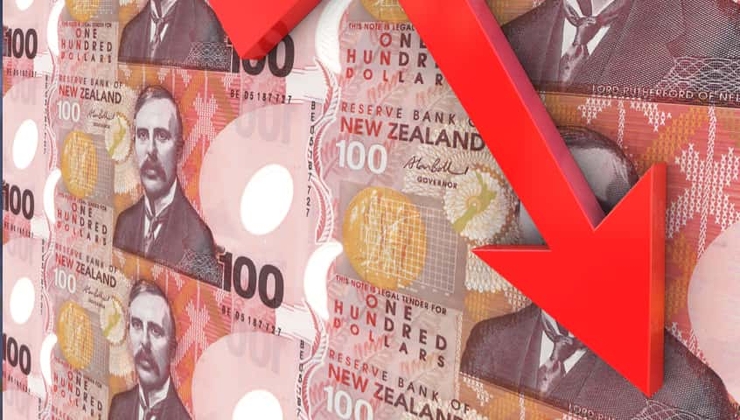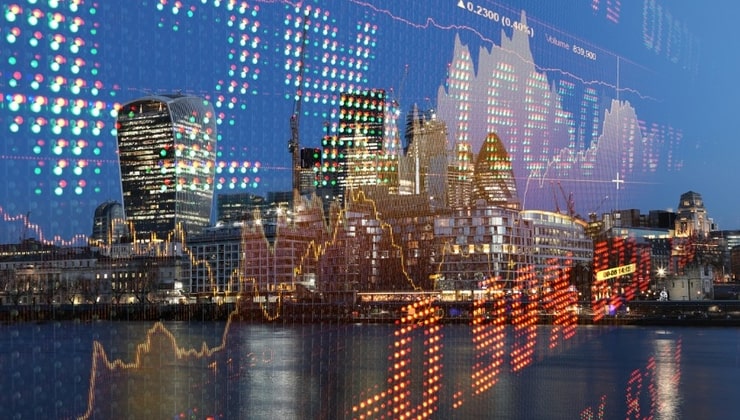CFD là công cụ phức tạp và có nguy cơ mất tiền nhanh chóng do đòn bẩy. 80% tài khoản nhà đầu tư bán lẻ bị mất tiền khi giao dịch CFD với nhà cung cấp này. Bạn nên cân nhắc xem bạn có hiểu cách hoạt động của CFD hay không và liệu bạn có đủ khả năng chấp nhận rủi ro mất tiền cao hay không.
- Tiếng Việt
- English
- 简体中文
- 繁体中文
- ไทย
- Español
- Português
- لغة عربية
Maybe AI tech is an investment bubble. And that’s okay
Initially intended as a demo for the technology, the chatbot’s popularity exploded. Less than a week after its launch, the chatbot reportedly had more than a million users. This number had already skyrocketed to 100 million by January, less than two months later.
But now, a different word is being thrown around when a conversation inevitably turns to AI. And that word is: bubble. From articles in the Financial Times,1 to OpenAI’s CEO Sam Altman himself saying the Chat GPT AI craze has likely had its day,2 many are wondering if recent months’ chatbot craze is about to pop.
Now, your own risk appetite and the markets you go for is an individual affair, and it’s up to you to manage that – but it’s no secret that the word ‘bubble’ strikes fear into the heart of the average investor. Despite the fact financial bubbles rarely deflate overnight. Why?
What is a financial bubble exactly?
According to the NASDAQ website, a bubble is “a market phenomenon characterised by surges in asset prices to levels significantly above the fundamental value of that asset.”3
In other words, bubbles are pure hype, where valuations become so outrageous that they cannot be justified even in the most optimistic scenario – where so much speculative capital piles into an asset that eventually there is a tipping point and it ultimately bursts. They’re the siren calls that have ruined countless individual traders and retail investors, whole sectors and even economic empires. The ‘tulip mania’ of Amsterdam at the height of its powers, the 1990s ‘dot com’ fiasco and the housing crash right before the global financial crisis – all are considered previous bubbles.
…But is that really such a bad thing?
Why are traders so afraid of bubbles?
Looking at the above examples of financial bubbles popping history, you can see why it’s a dirty word in financial circles. In fact, most value investors naturally won’t touch bubble-dependent stock with a ten-foot pole, as valuations are at such sky-high levels. But why do they inspire such fear?
Well, that’s because it’s very difficult to get hard data on bubbles, which makes it easy to suffer loss.
As NASDAQ’s website points out: “bubbles are often hard to detect in real time because there is disagreement over the fundamental value of the asset.” 3 There’s a reason for that, and it’s usually the lack of data for traders and investors to study.
Bubbles are typically associated with zeitgeist, things that have caught the public’s imagination and have thus gone the market’s equivalent of viral. These things tend to be new and exciting, or with a fresh new wind in their sails – not the familiar, well-known old assets. Which are very difficult to price, predict and study.
You can understand why bubbles might be an investor’s worst nightmare, then. Investors, who need public companies or established funds to hitch their wagons to, and who need to purchase those, then sell them at the right time in order to profit. Something which is a concept, a vision of what could be and driven to extremes by rampant speculation and market sentiment, perhaps when there isn’t even an IPO to trade on as yet (we’re looking at you, OpenAI) could be a very difficult beast to own indeed.
…But then what about traders?
.jpg)
Trading places
A lot of the common wisdom spouted online is written for and by those in team investing, and it’s these folks that understandably have such angst about bubbles. But traders are by definition speculators on the financial market pie rather than owners safeguarding their own slice – and they could view all this quite differently.
Many traders are in fact drawn to bubbles because they represent absolute momentum and a strong underlying trend – buy high and sell higher – where emotions and FOMO take hold. That being said, longer-term trading strategists can definitely profit – or lose their shirt – on the rollercoaster that is a bubble forming and bursting. Even if you only get out of a bubble after Minsky’s ‘profit-taking’ stage, when the markets have already started to descend into ‘stage panic’, you’d still likely sell at a significantly higher price than the underlying asset was worth pre-bubble.
Even better, if you’ve chosen to go long on something, for example a stock, that had intrinsic worth before the bubble ever came along, you can likely ride those higher earnings for quite a while. Just look at the latest results by NVIDIA, which has been linked to the AI gravy train from the beginning, especially since Chat GPT itself hilariously confirmed that it uses NVIDIA GPUs.4 And on 24 May, NVIDIA reported Q1 revenues almost $1 billion higher than expected, boosting its share price by more than 25% on the day.
Indeed, for those traders who know their markets and strategy well, ‘bubble’ is often just a bigger word for ‘opportunity’. A bubble is arguably scalping writ large – it is by nature transient and risky, but to traders this just means it comes with very specific strategies and mindsets that are shorter-term in nature and keep in mind the nature of the thing they’re riding. A successful trader doesn’t buy a horse and hope it’ll win the race like an investor does, but instead uses the one that looks the fastest to get from A to B. Few things are faster than a bubble if you time it right – and isn’t that what trading is about anyway?
But is AI really a bubble? How to recognise a financial bubble:
- Assets' prices increases rapidly - A bubble typically starts with an asset experiencing a period of rapid price increase, which draws more and more buyers in.
- Everyone is talking about it - Bubbles are often associated with media hype – everyone seems to be gabbing about the same asset and the potential return you can get from it.
- Experts are warning of it being overvalued - As more people flock to buy an asset, its price continues to rise beyond what can be considered fair value in proportion to its earnings or other financial parameters.
- Everyone is buying - The asset reaches a point where everyone seems to be buying, regardless of price or potential return on investment. This is often fuelled by financial market FOMO, as well as the perceived ‘wisdom’ that prices can only go up from here.
Some strategies for trading on bubbles
Here are some ways traders may look at speculating on the AI bubble and other investment bubble in the stock market:
- Trend trading: the most obvious MO is to ride the momentum and then trade the fade of market sentiment’s hype
- Short-selling: bubbles are most often identified on the come-down, and the higher they rise, the harder they tend to fall. Short-selling things like less-established stock that’s associated with that bubble, or broad-spectrum instruments exposed to it like ETFs or some indices, is another strategy to exploit there
- Hedging using options: stock market bubbles tend to be volatile and move very much, very fast, with tons of liquidity. This makes things like options – which give you the right to let them expire – a way to hedge your positions that may be exposed to a speculative bubble
- Breakout trading: stock prices, ETFs or commodities associated with a bubble may be poised for a true breakout – the trick would be identifying it and getting in on the action in time
Final thoughts
Experts, market enthusiasts and voices calling out in the wilderness are declaring the Chat GPT-heralded AI craze of 2023 a bubble. And that’s no bad thing – especially if you’re a trader.
In the big, crazy soup that is the financial markets, bubbles are part of the deal, they’re a natural phenomenon of a moving, thriving market as much as other elements like liquidity and volatility are.
Bubbles are also highly useful for the progression of our society, especially tech bubbles like this one. Just because something’s likely to burst doesn’t mean it doesn’t leave a lasting impact on the world – just look at the Dot Com Bubble. Are you trying to tell me that the internet didn’t change our way of life?
So, bottom line is, bubbles are not evil – they just are. You can make enormous losses, but also enormous profits, when a financial bubble arrives on the scene – as long as you recognise it for what it is, and don’t strategise or invest based on what it isn’t.
Or, as our Head of Research Chris Weston likes to say: Remember, if you want to dance in the disco, you’d better be the closest to the exit if a fire breaks out. Know your risk and know when the party is over, no matter how bubbly it is.
References:
1Financial Times, 2023
2Wired magazine, 2023
3NASDAQ, 2018
4Fierce Electronics, 2023
Related articles
Pepperstone không đại diện cho việc tài liệu được cung cấp ở đây là chính xác, hiện tại hoặc đầy đủ, và do đó không nên dựa vào nó. Thông tin, có phải từ bên thứ ba hay không, không được coi là một khuyến nghị; hoặc một đề nghị mua bán; hoặc một lời mời mua bán bất kỳ chứng khoán, sản phẩm tài chính hoặc công cụ nào; hoặc tham gia vào bất kỳ chiến lược giao dịch cụ thể nào. Nó không tính đến tình hình tài chính hoặc mục tiêu đầu tư của độc giả. Chúng tôi khuyên bất kỳ độc giả nào của nội dung này nên tìm kiếm lời khuyên của riêng mình. Mà không có sự chấp thuận của Pepperstone, việc sao chép hoặc phân phối lại thông tin này không được phép.


